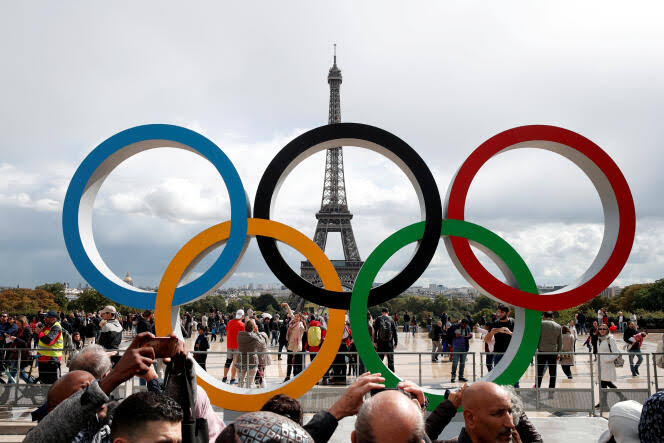Introduction
Sponsorship is a vital component of the Olympic Games, providing essential financial support and contributing to the overall success of the event. For sponsors, measuring the return on investment (ROI) is crucial to assess the effectiveness of their sponsorship and to justify their investment. This blog explores the significance of measuring ROI in Olympic sponsorships, the methods used to evaluate it, and best practices for maximizing the value of sponsorship deals.
1. The Importance of Sponsorship in the Olympics
Financial Support: Sponsorship provides a significant portion of the funding required to organize the Olympic Games. It covers various expenses, including infrastructure, marketing, and operational costs. Sponsors play a crucial role in ensuring the smooth execution of the Games.
Brand Exposure: For sponsors, the Olympics offer unparalleled global visibility. The Games attract millions of viewers worldwide, providing sponsors with an opportunity to showcase their brand on a prestigious platform. This exposure can enhance brand recognition, reputation, and market reach.
Engagement and Activation: Olympic sponsorship allows brands to engage with audiences through various activation strategies. This includes on-site promotions, athlete endorsements, and interactive campaigns that connect with fans and enhance their overall experience.
2. Methods for Measuring Sponsorship ROI
Quantitative Metrics
Media Exposure: One of the primary ways to measure ROI is by evaluating media exposure. This includes assessing the volume and quality of media coverage, such as television broadcasts, online mentions, and print articles. Metrics such as advertising value equivalency (AVE) and share of voice (SOV) can provide insights into the value of media exposure.
Audience Reach and Engagement: Measuring the reach and engagement of sponsorship activations helps determine ROI. This includes tracking metrics such as social media impressions, website traffic, and event attendance. Tools like Google Analytics and social media analytics platforms provide valuable data on audience interactions.
Sales Impact: Analyzing the impact of sponsorship on sales is a key ROI measure. This involves tracking changes in sales performance, brand loyalty, and market share before, during, and after the Olympic Games. Sales data can be compared with sponsorship activities to assess their effectiveness.
Brand Perception: Evaluating shifts in brand perception and reputation can provide insights into the ROI of sponsorship. Surveys, focus groups, and sentiment analysis can measure changes in consumer attitudes and brand associations resulting from Olympic sponsorship.
Qualitative Metrics
Brand Alignment and Fit: Assessing how well the Olympic sponsorship aligns with the brand’s values and objectives is crucial. This involves evaluating whether the sponsorship enhances the brand’s image, strengthens its position in the market, and resonates with its target audience.
Engagement Quality: The quality of engagement with consumers and stakeholders is another important metric. This includes evaluating the effectiveness of activation strategies, the level of interaction with the brand, and the overall impact on consumer experience.
Strategic Objectives: Measuring the alignment between sponsorship activities and strategic business objectives helps assess ROI. This includes evaluating whether the sponsorship supports long-term goals, such as brand positioning, market expansion, or customer acquisition.
3. Best Practices for Maximizing Sponsorship ROI
Set Clear Objectives: Establishing clear and measurable objectives before entering into a sponsorship agreement is essential. This includes defining specific goals related to brand exposure, audience engagement, and sales performance. Clear objectives provide a basis for evaluating the success of the sponsorship.
Implement Effective Activation Strategies: Developing and executing well-planned activation strategies can enhance the value of sponsorship. This includes leveraging on-site opportunities, engaging with fans through digital platforms, and creating memorable experiences that reinforce the brand’s association with the Olympics.
Monitor and Analyze Performance: Regular monitoring and analysis of sponsorship performance are crucial for measuring ROI. Utilizing analytics tools and conducting post-event evaluations help assess the effectiveness of sponsorship activities and identify areas for improvement.
Adapt and Optimize: Based on performance analysis, adapting and optimizing sponsorship strategies can enhance ROI. This involves making adjustments to activation plans, targeting strategies, and engagement tactics to maximize the impact of the sponsorship.
4. Case Studies of Successful Olympic Sponsorship Measurement
Coca-Cola’s Olympic Sponsorship: Coca-Cola has been a long-time Olympic sponsor, leveraging its association with the Games to enhance brand visibility and engagement. By employing comprehensive measurement strategies, including media exposure analysis and consumer surveys, Coca-Cola has successfully demonstrated the value of its sponsorship investments and optimized its activation efforts.
Visa’s Olympic Activation: Visa’s sponsorship of the Olympics has focused on creating innovative digital experiences and engaging with fans through various activation strategies. By tracking metrics such as digital engagement, social media interactions, and brand perception, Visa has been able to measure the ROI of its sponsorship and refine its approach to maximize impact.
P&G’s Olympic Marketing: Procter & Gamble (P&G) has utilized its Olympic sponsorship to promote its brands and support athletes. By analyzing sales data, media coverage, and consumer sentiment, P&G has effectively measured the ROI of its sponsorship and leveraged insights to enhance its marketing strategies.
5. Conclusion
Measuring the ROI of Olympic sponsorships is essential for understanding the value of the investment and maximizing its impact. By employing a combination of quantitative and qualitative metrics, sponsors can gain valuable insights into the effectiveness of their sponsorship activities. Setting clear objectives, implementing effective activation strategies, and continuously monitoring performance are key to achieving a successful sponsorship outcome. As the Olympics continue to evolve, effective measurement and optimization of sponsorship efforts will remain crucial for driving brand success and achieving strategic goals.

